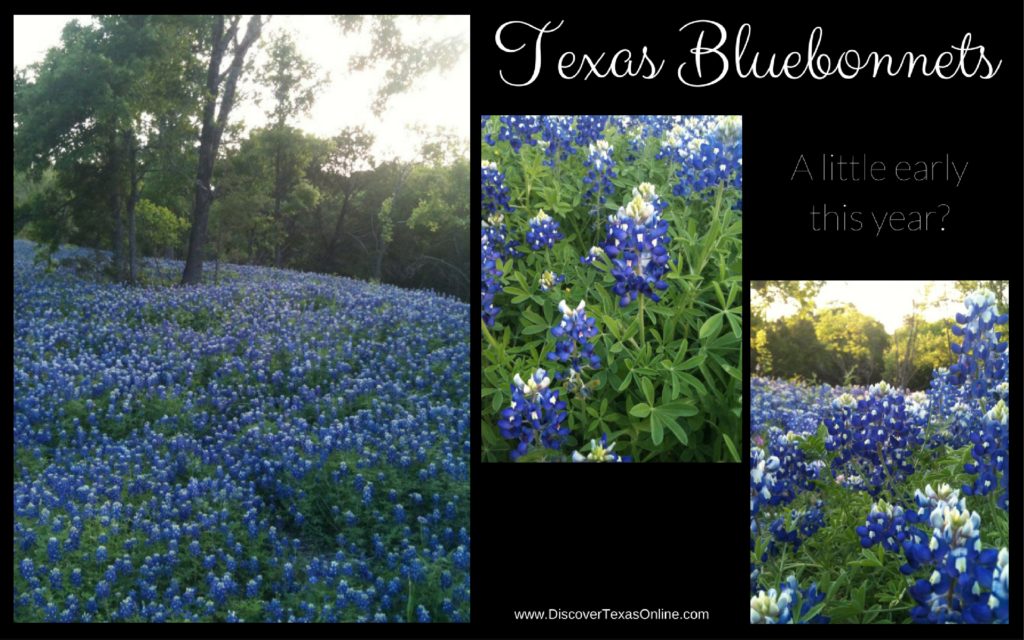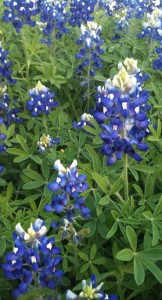 Did you know that there are five varieties of bluebonnet “officially” recognized as the State Flower?
Did you know that there are five varieties of bluebonnet “officially” recognized as the State Flower?
According to the Texas Cooperative Extension, the five state flowers of Texas are:
 Lupinus subcarnosus, the original champion and still co-holder of the title, grows naturally in deep sandy loams from Leon County southwest to LaSalle County and down to the northern part of Hidalgo County in the Valley. It is often referred to as the sandy land bluebonnet. The plant’s leaflets are blunt, sometimes notched with silky undersides. This species, which reaches peak bloom in late March, is not easy to maintain in clay soils.
Lupinus subcarnosus, the original champion and still co-holder of the title, grows naturally in deep sandy loams from Leon County southwest to LaSalle County and down to the northern part of Hidalgo County in the Valley. It is often referred to as the sandy land bluebonnet. The plant’s leaflets are blunt, sometimes notched with silky undersides. This species, which reaches peak bloom in late March, is not easy to maintain in clay soils.
Lupinus texensis, the favorite of tourists and artists, provides the blue spring carpet of Central Texas. It is widely known as THE Texas bluebonnet. It has pointed leaflets, the flowering stalk is tipped with white (like a bunny’s tail) and hits its peak bloom in late March and early April. It is the easiest of all the species to grow.
Lupinus Havardii, also known as the Big Bend or Chisos Bluebonnet, is the most majestic of the Texas bluebonnet tribe with flowering spikes up to three feet. It is found on the flats of the Big Bend country in early spring, usually has seven leaflets and is difficult to cultivate outside its natural habitat.
Lupinus concinnus is an inconspicuous little lupine, from 2 to 7 inches, with flowers which combine elements of white, rosy purple and lavender. Commonly known as the annual lupine, it is found sparingly in the Trans-Pecos region, blooming in early spring.
Lupinus plattensis sneaks down from the north into the Texas Panhandle’s sandy dunes. It is the only perennial species in the state and grows to about two feet tall. It normally blooms in mid to late spring and is also known as the dune bluebonnet, the plains bluebonnet and the Nebraska Lupine.
Bluebonnets tend to be biennial, which means they bloom (or at least bloom more profusely) every other year. Owing to this year’s mild winter, we said goodbye to our last blossoms in October, and the new leaves were peeking out by late December! This should be a good year, especially if there is good rainfall in your area.
Be on the lookout for the distinctive leaves. You might even make a “wherever you happen to be” field trip out of the search!
Please report when and where you first site leaves or bluebonnets in the comment section!





Lynn Dean
When I pre-loaded this post at the first of January, I had no idea that I’d be writing in so soon with my own first sighting!
This has been an freakishly mild winter in San Antonio with weather into the 80s in December. I sowed bluebonnet seeds in our front yard last summer, and the poor things are so confused! They sprouted around Thanksgiving, and on January 9th I spotted the first flower spike. It was already showing a hint of blue!
Pop over to the Discover Texas Facebook page (www.facebook.com/Discover-Texas-453493918060522) to see a picture of my January bluebonnet.